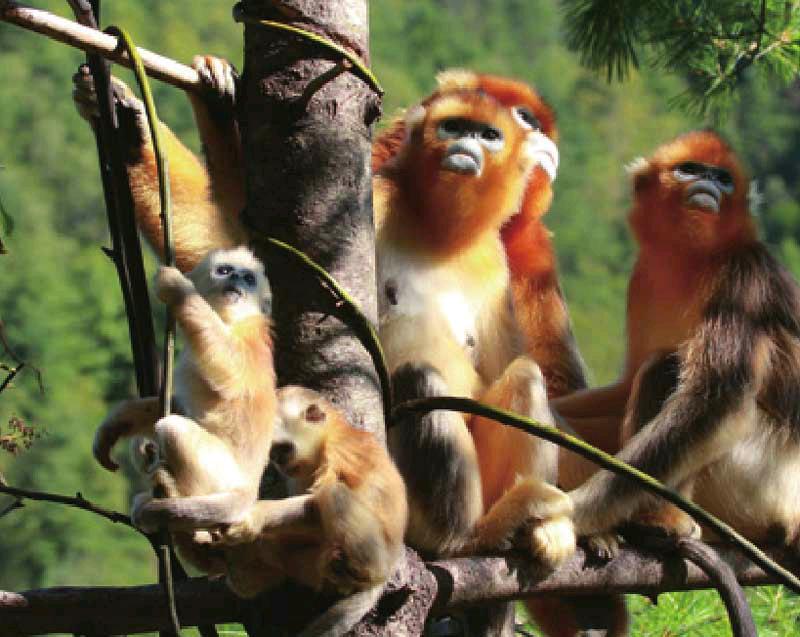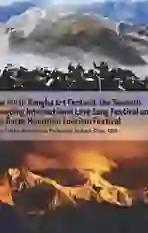Sites for Sore Eyes
2016-08-19ByJiJing
By+Ji+Jing
Think of a mountain awash with paint- ings—you can come across just such a marvel in Guangxi Zhuang Autonomous Region in south China. One of the regions major landmarks is the Zuojiang Huashan Rock Art Cultural Landscape, a natural canvas of red-rock cliffs, stretching as far as the eye can see, with vivid images painted on them.
The tribal artwork, painstakingly created over 2,000 years ago on a sprawling rocky canvas measuring nearly 8,000 square meters, hit headlines worldwide in late July when, along with another landmark in central Chinas Hubei Province—the Shennongjia forest reserve, it was recognized by the UN Educational, Scientific and Cultural Organization(UNESCO) as a world heritage site.
The UNESCO World Heritage Committee made the decision at its 40th session in Istanbul, Turkey, on July 11-17, taking the total number of Chinas world heritage sites up to 50, second only to the number in Italy.
China became a state party to the UNESCO Convention Concerning the Protection of the World Cultural and Natural Heritage in 1985 and has been applying for recognition for its cultural and natural landmarks since then.
Art moves mountains
Of the 38 clusters that form the Zuojiang Huashan Rock Art Cultural Landscape, rock paintings in Ningming County are the most famous. On a cliff 200 meters wide and 50 meters high, there are over 1,800 images. Half-squatting humanoid figures with their arms raised form the primary motif, accounting for 72 percent of the images at the site. The largest figure is 1.8 meters high. There are also images of horses, dogs, drums, knives, swords and boats.
Zhu Qiuping, Director of the countys Cultural Heritage Administration Office, has been engaged in the preservation of the rock paintings for more than 20 years. To him, the figures look like frogs and he thinks they may be related to the worship of amphibians in ancient times when they were believed to bring rain and fertility.
Using radiocarbon dating, archaeologists have determined that the Huashan rock paintings were created between Chinas Spring and Autumn Period (770-476 B.C.) and the Eastern Han Dynasty (A.D. 25-220).The Luoyue people, ancestors of the contemporary Zhuang ethnic minority group, are believed to have been the creators. Today, 81 percent of the population of Ningming are from the Zhuang minority group.
“There are few records of the Luoyue people in historical documents, but the Huashan rock paintings depict their activities,” said Lan Riyong, Deputy Director of a Guangxi Regional Governments office in charge of the Huashan rock paintings bid for the world heritage site status.
Mysteries surround the paintings. How were the Luoyue people able to put such a large number of paintings on the dangerous cliffs? They rise vertically and in some places there is a sheer drop into the Zuojiang River. Some archaeologists hypothesize that the water level in the river was higher 2,000 years ago and the artists worked from boats. Others believe they built scaffoldings on the sheer face of the cliffs and drew the images that way.
Some of the paintings have preserved their bright red color even after 2,000 years. This miracle is attributed to the artists using a mixture of ground hematite and animal or plant glue to make their paint.
It is a challenge to preserve the paintings from erosion and other natural phenomena. Zhu said that in the past decade, restoration work had been undertaken and will continue.
Land of biodiversity
Shennongjia, covering 3,200 square km, derives its name from Shennong, a legendary tribal leader in prehistoric times. Also known as Yandi, he is regarded as one of the two ancestors of the Chinese people, the other being Huangdi. Jia literally means ladder.
According to legend, Shennong used to examine the medicinal herbs growing on the mountains by climbing up ladders he himself had built. In this way he discovered many healing herbs and the region was named after him to commemorate his contribution to Chinese medicine.
The region is characterized by its biodiversity, boasting not just a wide variety of plants but animal and insect species as well. UNESCO has acknowledged its protection of the primary forests in central China and providing a home to many rare animal species. These include the Chinese giant salamander, the golden or snub-nosed monkey, the clouded leopard and the Asian black bear.
Shennongjia is also known for its lore of the Yeren. Literally meaning “wild man,” it is about Chinas Bigfoot, the hairy apeman walking upright and reportedly sighted by locals. But although foot prints and hair believed to belong to the wild man have been found, there is still no scientific evidence confirming its existence.
The protection of Shennongjia is also a challenging task. A new airport has been built in the area, causing concerns that a surge of tourists may endanger the preservation of the natural environment there.
Zuo Xiaoping, head of the Landscape Department at the Ministry of Housing and Urban-Rural Development, said that Shennongjias listing as a world heritage site shows that its value has been recognized. “Next, we should strengthen the protection and management of the site,” he said.
Ai Yingjie, Vice Mayor of Shennongjia, said that the number of tourist arrivals will be capped at 798,000 per year in future. At present, about 700,000 visits are made to the region annually.
